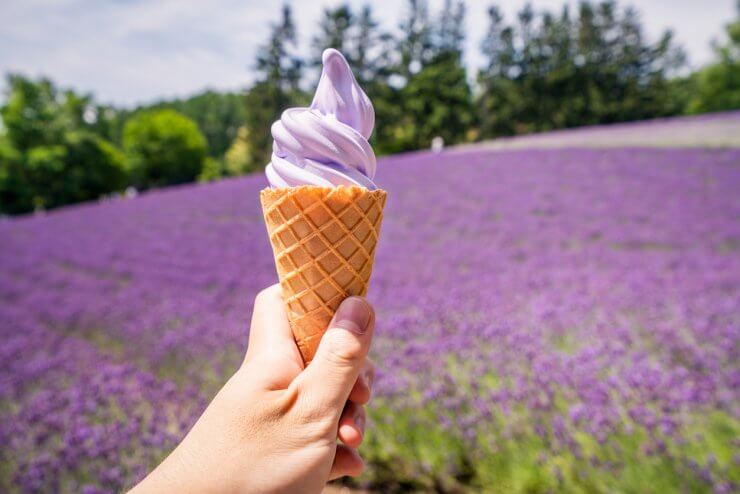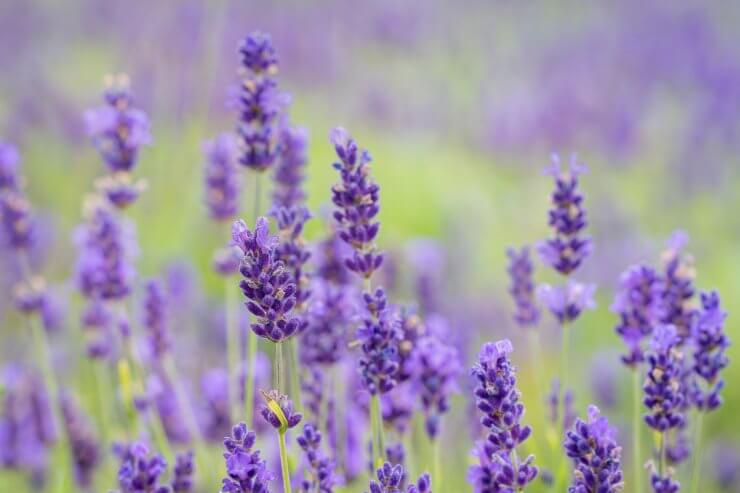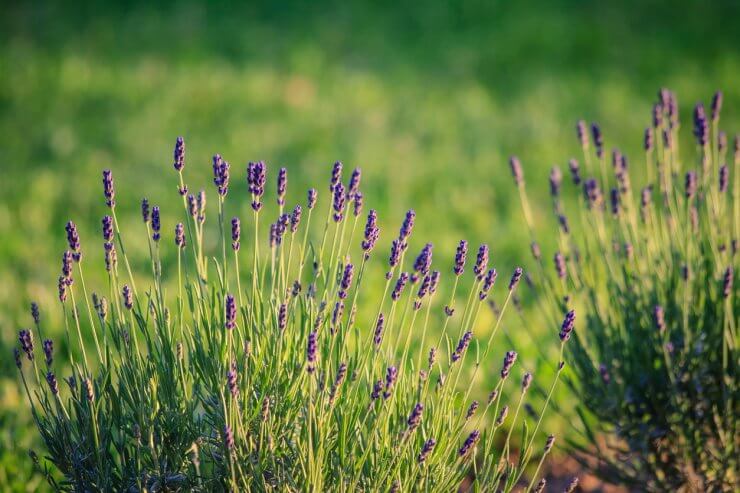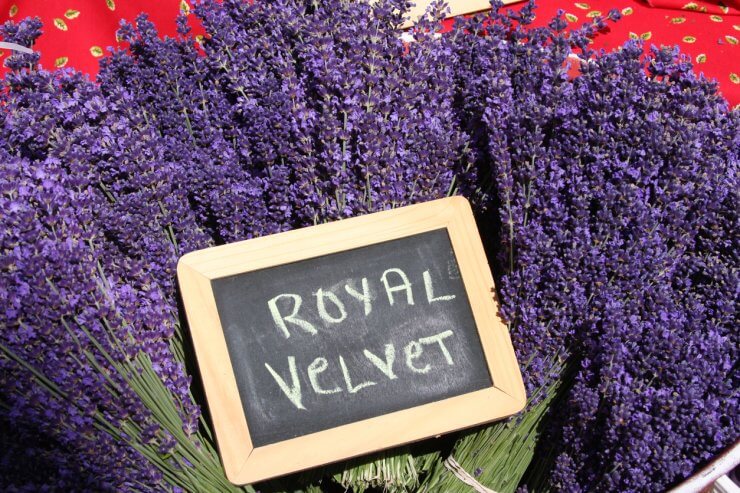
We’re about to embark on a journey through the surprisingly complex world of edible lavender, where your herb garden meets culinary science. The plot twist? Most people have been getting lavender completely wrong. We’re not talking about throwing random purple flowers into cookie dough and hoping for the best. This is actual flavor chemistry, backed by centuries of culinary tradition and just enough plant science to make you sound incredibly sophisticated at parties.
Here’s where things get interesting from a chemistry perspective. Lavender’s culinary magic isn’t just pretty packaging – it’s all about compounds called linalool and linalyl acetate. These are the molecular heroes responsible for that distinctive floral-yet-not-soapy flavor that makes properly used lavender taste like sophisticated European cooking rather than accidentally eating your grandmother’s potpourri.
Different lavender varieties for culinary use contain wildly different concentrations of these compounds. It’s basically like comparing wine varietals, except instead of tannins and terroir, we’re dealing with volatile oils and flower timing. The Romans figured this out around 2,000 years ago, which means we’re essentially catching up to ancient culinary chemistry. Humbling, but also kind of exciting.
The concentration of these flavor compounds peaks right before the flowers fully open – a narrow window that separates “restaurant-quality seasoning” from “accidentally seasoned with bath products.” Understanding this timing difference is what separates casual lavender dabblers from people who actually know what they’re doing.
Three Best Lavender Varieties for Culinary Use That Actually Deliver

Hidcote Lavender
Hidcote (Lavandula angustifolia ‘Hidcote’) is what happens when a plant decides to be genuinely good at everything. Compact, hardy, and consistently flavorful, it’s the Swiss Army knife of culinary lavenders. This variety brings a perfectly balanced sweet-floral profile with just enough earthy complexity to keep things interesting.
The beauty of Hidcote lies in its predictability. While other herbs might have mood swings depending on weather conditions, soil quality, or planetary alignment, Hidcote just keeps delivering consistent flavor year after year. It’s the friend who always shows up on time with exactly what you need.
- Flavor Profile: Balanced floral sweetness with earthy undertones
- Peak Performance: Baking, herb rubs, infusions, and converting lavender skeptics
- Garden Personality: Low-maintenance overachiever with excellent boundaries

Munstead Lavender
Named after renowned gardener Gertrude Jekyll’s estate (real person, not Gothic novel character), Munstead represents the diplomatic approach to lavender varieties for culinary use. It offers all the floral complexity you want without the risk of overwhelming delicate dishes.
This variety practically invented the concept of “subtle sophistication.” Where other lavenders might elbow their way to the front of flavor profiles, Munstead knows how to play supporting roles beautifully. It’s perfect for beginners who worry about accidentally creating something that tastes like they raided a soap factory.
- Flavor Profile: Gentle floral notes with natural sweetness
- Peak Performance: Teas, delicate desserts, herb salts, and diplomatic flavor mediation
- Garden Personality: The peaceful mediator who gets along with everyone

Royal Velvet Lavender
Royal Velvet represents lavender’s dramatic side – intense, complex, and absolutely unapologetic about it. This English lavender hybrid brings depth and sophistication that makes other herbs slightly jealous. It’s the variety that shows up to your garden with stories about European estates and mysterious culinary traditions.
With its deeper, more layered flavor profile, Royal Velvet works best when you want your food to have actual personality. It’s not background music; it’s the lead vocalist with something important to say.
- Flavor Profile: Complex and intense with sophisticated floral layers
- Peak Performance: Bold savory dishes, craft cocktails, and making statements
- Garden Personality: The intriguing dinner party guest with mysterious stories
Growing Your Lavender Empire
Location Strategy
Lavender varieties for culinary use essentially want to live in perpetual Mediterranean vacation mode. Full sun, excellent drainage, and minimal fussing. They’re the independent travelers of the herb world – give them the right conditions and leave them alone to do their thing.
Select spots with 6–8 hours of direct sunlight and soil that drains efficiently. If your garden tends to hold water like emotional baggage, amend with gravel or sand. Lavender’s biggest enemy isn’t drought – it’s soggy roots and helicopter gardening.
The Counterintuitive Care Philosophy
Here’s the beautiful paradox of growing culinary lavender: neglect often produces superior flavor. Stress concentrates essential oils, making your herbs more intensely flavored. It’s like lavender thrives on being the mysterious, slightly aloof plant in your collection.
Water deeply but infrequently. Fertilize sparingly, if at all. Resist the urge to constantly check on progress. Your lavender doesn’t need helicopter parenting; it needs occasional acknowledgment and mostly benign neglect.
Harvest Timing
Maximum flavor occurs when flower buds are formed but haven’t fully opened – typically early to mid-morning after dew evaporation but before peak heat. This narrow window contains the highest concentration of those essential flavor compounds we discussed earlier.
Cut stems cleanly, bundle with rubber bands (they won’t slip like string as stems shrink), and hang upside down in a dry, well-ventilated area. Properly dried lavender maintains flavor intensity for months, giving you year-round access to summer’s botanical bounty.

Breaking Lavender’s Dessert Stereotype
Most people trap lavender in the dessert ghetto, which is tragic because lavender varieties for culinary use absolutely excel in savory applications. We’re talking about flavor combinations that make French chefs nod approvingly and food critics start taking notes.
Lavender-Herb Crusted Proteins: Combine finely chopped Hidcote with traditional herbs like rosemary and thyme. The lavender adds unexpected floral complexity that transforms ordinary roasted meats into something that belongs in actual restaurants. The key is proportion – lavender should whisper, not shout.
Sophisticated Compound Salts: Mix any of our featured varieties with quality sea salt, and suddenly you have a finishing salt that elevates everything from roasted vegetables to chocolate desserts. It’s the kind of simple preparation that makes people assume you know secrets they don’t.
Lavender-Infused Oils and Vinegars: Gently warm high-quality olive oil with lavender, then strain for an infusion that turns basic salads into something worth photographing. The same technique works with white wine vinegar, creating dressings that taste like expensive restaurant secrets.
Advanced Mixology
Lavender cocktails represent one of the most underutilized applications of culinary lavender. We’re not talking about overly sweet, perfume-adjacent drinks that taste like mistake. These are sophisticated cocktails that happen to contain lavender.
The Lavender Aviation: A riff on the classic Aviation cocktail, substituting lavender simple syrup (made with Munstead) for the traditional crème de violette. It maintains the drink’s floral complexity while adding herbal depth that makes gin enthusiasts very happy.
Lavender Bee’s Knees Variation: The Prohibition-era classic gets upgraded with lavender honey syrup. It’s like the 1920s decided to collaborate with modern botanical mixology, and the results are historically delicious.
Lavender Lemon Smash: Muddle fresh lavender with lemon and simple syrup, add vodka or gin, top with club soda. It’s summer in liquid form, but with more sophistication and fewer sticky surfaces.
Fun Lavender Recipe Additions
Honey-Lavender Compound Butter: Liquid Gold
Combine softened butter with honey and minced Royal Velvet. Roll in parchment, refrigerate, and deploy strategically on everything from corn to artisanal bread. It’s simple preparation with sophisticated results.
Professional-Level Ice Cream Base
Steep Munstead in warming cream for 30 minutes, strain thoroughly, and use as your ice cream foundation. The result tastes like summer decided to become dessert, with floral notes that complement rather than compete with dairy richness.

Troubleshooting Common Lavender Catastrophes
The Soap Opera Problem
When lavender tastes like accidental bath product consumption, it’s almost always a proportion issue. Culinary lavender varieties pack serious flavor punch – start with what seems like insufficient amounts, taste, and adjust gradually. Your future self will appreciate this restraint.
The Mysterious Plant Death Syndrome
Lavender casualties usually result from overwatering or poor drainage. These plants prefer being slightly thirsty to being constantly soggy. The other common culprit is excessive fertilization – lavender performs better with benign neglect than enthusiastic feeding schedules.
The Flavorless Flower Situation
Harvesting too late in the season or after full bloom results in diminished flavor intensity. The optimal harvest window is narrow but critical. Also verify you’re growing actual culinary varieties – not all lavenders translate effectively to food applications.
Your Lavender Legacy
Once you’ve mastered these three foundational varieties, the world of lavender varieties for culinary use opens up considerably. French lavender (Lavandula dentata) offers more camphorous notes perfect for bold savory dishes. Spanish lavender (Lavandula stoechas) provides unique flavor complexity with its distinctive bract formations.
The real advancement happens when you start blending varieties, creating signature flavor profiles that reflect your personal culinary style. It’s botanical chemistry meets personal expression, with delicious results that make your kitchen garden genuinely unique.
Consider succession planting different varieties for extended harvest seasons, or dedicating specific garden areas to particular culinary applications. Some gardeners develop entire lavender sections organized by flavor intensity and culinary function.
Want to know more about growing lavender? Lavender has been a popular crop for 10,000 years! With our Lovely Lavender Gardening Guide you’ll have everything you need to know about growing and enjoying lavender of many varieties — from planting to eating!


 Previous
Previous

